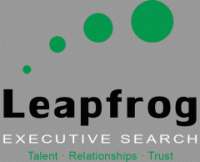Compounding Talent
Category : 2020
|
“. . . in the next century, we will have to become much more skilled at creating leaders. Without enough leaders, the vision, communication, and empowerment that are at the heart of transformation will simply not happen well enough or fast enough to satisfy our needs and expectations . . . Successful organizations in the twenty-first century will have to become more like incubators of leadership. Wasting talent will become increasingly costly in a world of rapid change,” (Leading Change). When Harvard professor John Kotter offered those ideas in 1996, he could not have imagined the timeliness of his counsel 24 years later, as businesses find a new equilibrium in a post-COVID market. As companies begin operating in whatever “new normal” their customers, industries, and employees require, HR leaders face the seminal challenge of catalyzing talent management beyond multiplication to compounding. Traditional approaches to developing critical roles and potential successors will prove inadequate for organizations wanting to capture the opportunities presented during a season of dramatic change. Compounding is foundational to financial investing. Compound interest is interest earned on money previously earned as interest – adding interest to the principal rather than paying it out. Interest in the next period is earned on the principal plus previously accumulated interest. This process creates exponential growth or what experts call a “snowball effect” where a small investment grows and gains momentum as it increases mass. Social media also leverages compounding as bloggers and marketing writers create evergreen content – information and ideas that carry long-term appeal. Multiple views of a page create a compounding effect that, over time, perpetuates more views by improving a site’s attractiveness to search engines. Compounding talent carries both an individual and collective impact. If two employees begin working with the same level of capability and one grows at one percent while the second grows at 10 percent, the compounded capability and future impact of the second person will dramatically outpace that of the first. Collectively, the high performer will generally make a positive impact on those around him/her, further compounding one individual’s growth across an enterprise. Nowhere is compounding talent more obvious or dramatic than when a human resources leader elevates the value and contributions of the HR role to include the development and application of systems and processes that facilitate the acquisition and development of key performers across the business. An HR executive using strategic foresight will define a path for identifying, developing, and retaining the talent required for operating a successful enterprise in the “new normal” facing every business. French philosopher Paul Valery said, “The trouble with our times is that the future is not what it used to be.” The heart of innovative HR leadership is leading an organization through uncertainty and change, refusing to relegate the impact and influence of HR to traditional operational functions. Unlike the immediacy of multiplication, compounding leverages the power of time. An HR executive committed to compounding talent will balance addressing the demands and immediate needs of crisis management while helping corporate leadership recognize the value of this strategy in preparing the organization for what it must be…finding a path through a future we could not anticipate. Søren Kierkegaard reminded us that, “Life can only be understood backwards; but it must be lived forwards.” HR executives cannot wait for a rearward view to evaluate what they did -they must boldly dive into an uncertain future with the enduring conviction that visions, strategies, and tactical plans are always accomplished through people. |
